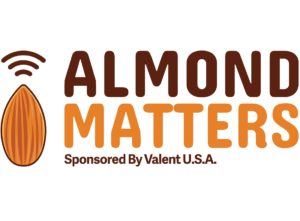In today’s Almond Matters, brought to you by Valent, warmer storms are heading to many parts of California. The storm systems over the past month have occurred during periods of cold weather. Field Market Development Specialist with Valent U.S.A., Todd Burkdoll said some growers in the north have been reporting freeze damage. With temperatures now on the rise, it heightens the potential for disease infection.
“With warmer temperatures and moisture, you basically create the environment for disease. For monilinia, for jacket rot, for botrytis depending on the field and what you’ve got going there. But there’s a whole host of diseases that like warmer temperatures and moisture,” Burkdoll noted. “So having something on preventatively before this warm string of storms come across would probably be a good idea at this point.”
With rain events coming during bloom, coupled with low temperatures, it created challenges for pollination. Burkdoll expects the overall crop to be down in terms of volume because of the various inclement weather systems that have come through. That could create more incentive for growers to take preventative measures with a fungicide application before the next set of storms. “The price should come up I would think. Supply and demand kicks in. So, it may be worth spending a few dollars to protect that crop that’s there,” said Burkdoll.
Warmer storms create optimal environments for disease, but also creates logistical challenges as well. Warm rains increase the amount of runoff that will be moving through California. The potential for flooding will be on the minds of many growers, particularly in low-lying areas. Additionally, the frequency of rain events has left soils saturated and could complicate orchard access.
“Soil is already waterlogged and then you go in and put another inch or two or three or whatever it’s going to bring, on top of that, it may be a week to 10 days before you can even think about getting equipment back in there,” said Burkdoll. “In this case, I think it would be opportunistic to make fungicide applications preventatively before these storms come.”
Listen to the report below.











